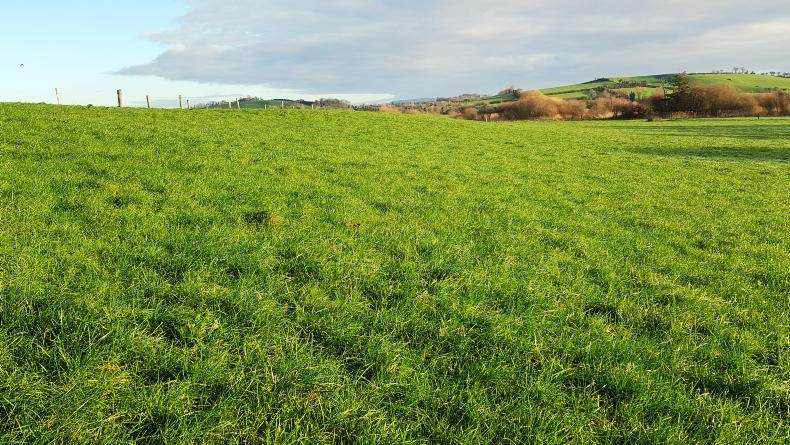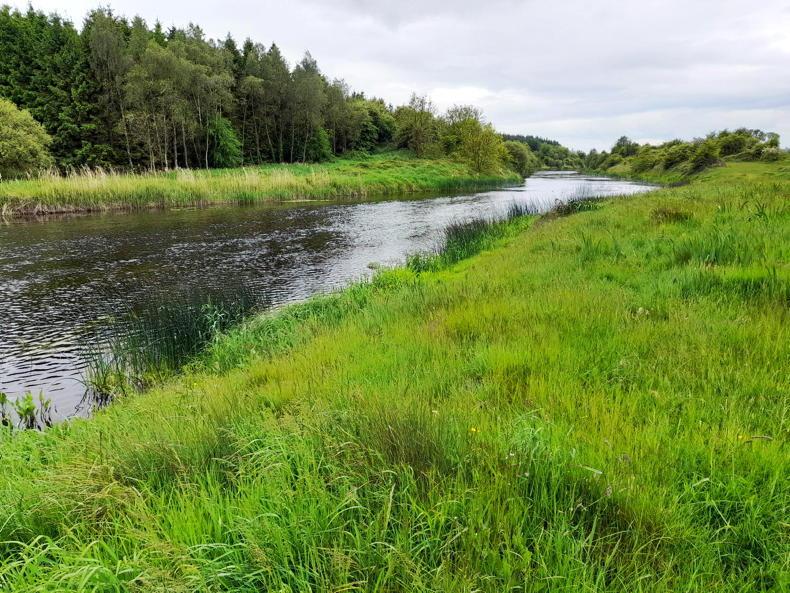Participants in phase two of Dairylink Ireland are currently receiving soil analysis results from samples taken in January 2019.
Fertiliser plans for the 2019 season will be based on these results and will primarily aim to address deficiencies in pH, phosphorus (P) and potassium (K) to boost grass growth rates.
Basing fertiliser plans on up-to-date soil analysis results also allows financial savings to be made as compound fertilisers are not spread on paddocks that are above optimal levels. Applying compound fertilisers in these paddocks serves no benefit in terms of production and can have environmental implications.
Below optimal pH is the main issue arising from soil analysis results received so far. This is the cheapest soil deficiency problem to address and experience from programme farms in phase one of Dairylink is that lifting soil pH levels leads to the biggest increase in grass growth.
Creating a colour-coded farm map which shows the soil status of each paddock can help us understand where issues are on farms and the fertiliser plan for each paddock.
Phase two programme farms will be soil-sampled again next winter to see how steps taken during 2019 have helped the soil nutrient status of their farms and where issues remain.
Programme farmers are also measuring grass during the growing season so increased grass yields should be evident as issues with soils are addressed. On phase one Dairylink farms, annual grass yields increased by 25% over a three-year period.
The results for the two programme farmers outlined below are based on the soil test and indices used in Northern Ireland. In this system, the general recommendation for intensive grassland soils is to have a P index of 2 with 2- being the optimal K index.
Less than half of soils at optimal pH on programme farms
Results from soil analysis taken on two Dairylink Ireland farms show that sub-optimal pH is the main issue that needs to be addressed.
On John Oliver’s farm near Limavady, Co Derry, only 30% of the land area has optimal soil pH levels above 6.1. The results show that 15% of John’s farm has soil pH between 5.8 and 6.1 and 55% of soils are below pH 5.8.
Only 11% of John Oliver’s farm is below optimal levels for K with an index of 1 and 39% of the land area is below optimal for P at an index of 1 and 2-.
On Stephen Wallace’s farm near Seaforde, Co Down, 42% of the farm is at optimal levels for soil pH above 6.1. There was 24% of the Wallace farm with pH between 5.8 and 6.1 and the remaining 34% was below pH 5.8.
Only 17% of the farm is below optimal levels for P with indices of either 1 or 2-. The same proportion of land had below optimal K index of 1.
The first element of this season’s fertiliser plan on both farms is to spread urea at 25 units per acre on all grazing ground that has not received slurry. Dairylink Ireland adviser Conail Keown says urea needs to go on early to maintain grass quality and allow growth to push on after covers are grazed off.
Slurry
On John’s farm, covers are heavy on the grazing block and no paddocks are suitable for slurry at present.
Cows got out to grass on Sunday for the first time and, if ground conditions hold and cows stay at grass, John might be able to get some slurry on after the first grazing. John is planning to get slurry on to silage ground in early March.
On the Stephen’s farm, three fields equating to around 20 acres are suitable for slurry at present and the rest of the milking platform will receive urea this week. A group of 40 late lactation cows have been selected for grazing and have been out during the day since Tuesday.
Conail said the plan is to apply lime after grazing later this spring on sub-optimal pH paddocks on both John’s farm and Stephen’s farm at 2,000kg per acre.
Issues with below optimal P and K indices will be addressed throughout the grazing season by applying suitable compound fertilisers.
The aim is to have applications of compound fertilisers replacing nitrogen spread in these paddocks three times throughout the grazing season with first round of compound fertilisers going on in March or April.
Conail said that paddocks with P and K indices at optimal levels will receive some compound fertilisers and/or slurry to maintain indices at their current levels.
No compound fertilisers will be applied in paddocks where indices are above optimal.
Weekly round-up
The first fertiliser application of 2019 is taking place on Dairylink Ireland farms with urea spread at 25 units per acre.Slurry is being applied to some fields on milking platforms with low grass covers.Initial results from soil sampling conducted during the winter indicate that low pH levels is the main issue on programme farms.Cows that are scanned in calf are at grass during the day on some Dairylink farms. Read more
Dairylink: spring grazing and cashflow planning
Dariylink: keeping heifers on track in Co Derry
Participants in phase two of Dairylink Ireland are currently receiving soil analysis results from samples taken in January 2019.
Fertiliser plans for the 2019 season will be based on these results and will primarily aim to address deficiencies in pH, phosphorus (P) and potassium (K) to boost grass growth rates.
Basing fertiliser plans on up-to-date soil analysis results also allows financial savings to be made as compound fertilisers are not spread on paddocks that are above optimal levels. Applying compound fertilisers in these paddocks serves no benefit in terms of production and can have environmental implications.
Below optimal pH is the main issue arising from soil analysis results received so far. This is the cheapest soil deficiency problem to address and experience from programme farms in phase one of Dairylink is that lifting soil pH levels leads to the biggest increase in grass growth.
Creating a colour-coded farm map which shows the soil status of each paddock can help us understand where issues are on farms and the fertiliser plan for each paddock.
Phase two programme farms will be soil-sampled again next winter to see how steps taken during 2019 have helped the soil nutrient status of their farms and where issues remain.
Programme farmers are also measuring grass during the growing season so increased grass yields should be evident as issues with soils are addressed. On phase one Dairylink farms, annual grass yields increased by 25% over a three-year period.
The results for the two programme farmers outlined below are based on the soil test and indices used in Northern Ireland. In this system, the general recommendation for intensive grassland soils is to have a P index of 2 with 2- being the optimal K index.
Less than half of soils at optimal pH on programme farms
Results from soil analysis taken on two Dairylink Ireland farms show that sub-optimal pH is the main issue that needs to be addressed.
On John Oliver’s farm near Limavady, Co Derry, only 30% of the land area has optimal soil pH levels above 6.1. The results show that 15% of John’s farm has soil pH between 5.8 and 6.1 and 55% of soils are below pH 5.8.
Only 11% of John Oliver’s farm is below optimal levels for K with an index of 1 and 39% of the land area is below optimal for P at an index of 1 and 2-.
On Stephen Wallace’s farm near Seaforde, Co Down, 42% of the farm is at optimal levels for soil pH above 6.1. There was 24% of the Wallace farm with pH between 5.8 and 6.1 and the remaining 34% was below pH 5.8.
Only 17% of the farm is below optimal levels for P with indices of either 1 or 2-. The same proportion of land had below optimal K index of 1.
The first element of this season’s fertiliser plan on both farms is to spread urea at 25 units per acre on all grazing ground that has not received slurry. Dairylink Ireland adviser Conail Keown says urea needs to go on early to maintain grass quality and allow growth to push on after covers are grazed off.
Slurry
On John’s farm, covers are heavy on the grazing block and no paddocks are suitable for slurry at present.
Cows got out to grass on Sunday for the first time and, if ground conditions hold and cows stay at grass, John might be able to get some slurry on after the first grazing. John is planning to get slurry on to silage ground in early March.
On the Stephen’s farm, three fields equating to around 20 acres are suitable for slurry at present and the rest of the milking platform will receive urea this week. A group of 40 late lactation cows have been selected for grazing and have been out during the day since Tuesday.
Conail said the plan is to apply lime after grazing later this spring on sub-optimal pH paddocks on both John’s farm and Stephen’s farm at 2,000kg per acre.
Issues with below optimal P and K indices will be addressed throughout the grazing season by applying suitable compound fertilisers.
The aim is to have applications of compound fertilisers replacing nitrogen spread in these paddocks three times throughout the grazing season with first round of compound fertilisers going on in March or April.
Conail said that paddocks with P and K indices at optimal levels will receive some compound fertilisers and/or slurry to maintain indices at their current levels.
No compound fertilisers will be applied in paddocks where indices are above optimal.
Weekly round-up
The first fertiliser application of 2019 is taking place on Dairylink Ireland farms with urea spread at 25 units per acre.Slurry is being applied to some fields on milking platforms with low grass covers.Initial results from soil sampling conducted during the winter indicate that low pH levels is the main issue on programme farms.Cows that are scanned in calf are at grass during the day on some Dairylink farms. Read more
Dairylink: spring grazing and cashflow planning
Dariylink: keeping heifers on track in Co Derry









SHARING OPTIONS